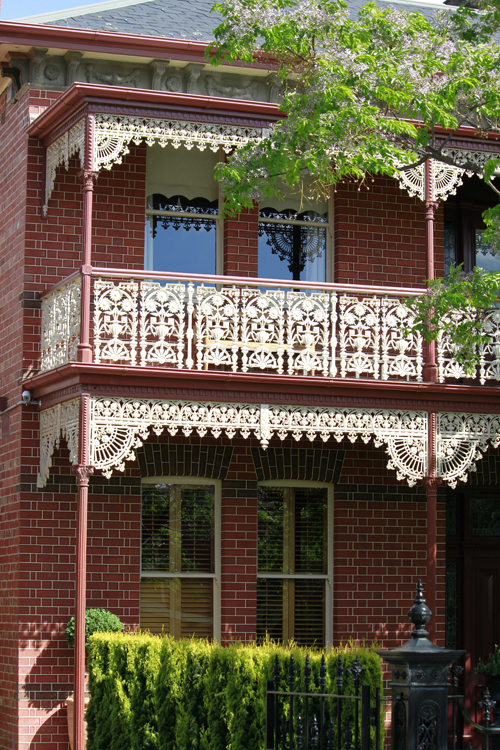What is tuckpointing?
 Tuckpointing is a way of using two contrasting colours of mortar in brickwork, one colour matching the bricks themselves, to give an artificial impression that very fine joints have been made.
Tuckpointing is a way of using two contrasting colours of mortar in brickwork, one colour matching the bricks themselves, to give an artificial impression that very fine joints have been made.
History of tuckpointing
The tuckpointing method was developed in England, in the late eighteenth century, to imitate brickwork constructed using rubbed bricks, which were bricks of fine, red finish that were made slightly oversized, and, after firing, then were individually abraded or cut, often by hand, to a precise size. When laid with white lime mortar, a neat finish of red brick contrasting with very fine white joints was obtained. Tuckpointing was a way of achieving a similar effect using cheap, unrubbed bricks: these were laid in a mortar of a matching colour and a fine fillet of white material, usually pipeclay or putty, pushed into the joints before the mortar set. The term tuckpointing derives from an earlier, less sophisticated technique that was used with very uneven bricks: a thin line, called a tuck, was drawn in the flush-faced mortar, but left unfilled, to give the impression of well-formed brickwork.
Tuckpointing Tools
Professional “tuckpointers” use tuckpointing tools commonly referred to as “jointers” or “tuckpointing irons” .
The tools themselves are made from a hardened quality tool steel and are shaped with a sharp-pointed front with a flat base. They have a wooden handle which is attached with a brass ferrule.
Thicknesses or widths of tuckpointing tools may be between 2 mm and 10 mm depending on the tuckpointers’ personal preferences. Standard tuckpointing tools most commonly used in industry are usually 4 mm and 6 mm thick.
Lengths of tools also vary depending on personal preferences, but the most common lengths are usually between 75 and 125 mm. However professionals sometimes like a much shorter tool, for instance one 30 mm long which is flat on the front in order to get into hard to reach spots, for instance under window brick work and in corners.
Tools are sometimes “beaded”. This means that a small rounded fillet is ground into the flat of the tuckpointing tool that comes into contact with the “perps” or “lines” in the brickwork. (In bricklaying terms, the “perps” are the gaps between the bricks in which mortar runs in the vertical direction, perpendicular to the ends. “Lines” run in the horizontal direction).
